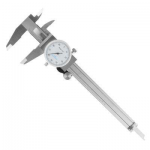I am trying to figure out the bushing size for a set of 6.5 PRC dies. Using a standard micrometer (I realize this is not the ideal tool for this) I am getting neck thickness of .11 on ADG brass when I measure the thickness of one side. If I take an inside/ outside measurement, subtract, and divide by two I get a thickness of .014.
When I add (2x.11) to .264 I get .286, minus .002 I get a bushing size of .284. The trouble I am having is that this number is no where near anything else as far as I can see. I have some loaded hornaday 147s that measure .290, and a user on facebook posted loaded ADG brass on a 6.5 SAUM needing a .289 bushing. If I use the .14 I get a .290 for a total diameter an a .289 bushing seems to be right.
So the million dollar question is what number do I trust? Do I go off the inside/outside measurement? I'm not opposed to buying a couple bushings but I need to load ammunition to get the "perfect" measurement first.
When I add (2x.11) to .264 I get .286, minus .002 I get a bushing size of .284. The trouble I am having is that this number is no where near anything else as far as I can see. I have some loaded hornaday 147s that measure .290, and a user on facebook posted loaded ADG brass on a 6.5 SAUM needing a .289 bushing. If I use the .14 I get a .290 for a total diameter an a .289 bushing seems to be right.
So the million dollar question is what number do I trust? Do I go off the inside/outside measurement? I'm not opposed to buying a couple bushings but I need to load ammunition to get the "perfect" measurement first.


